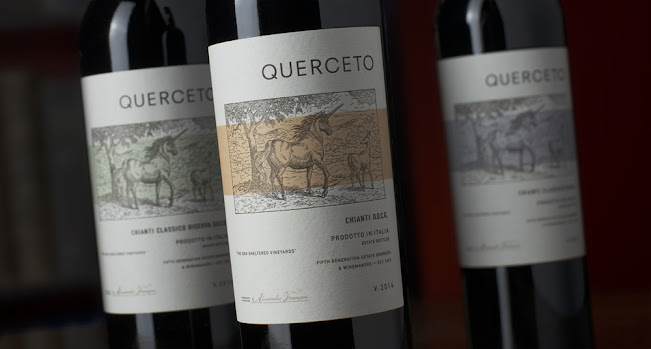Labeling (wine label) : the label attached to a bottle of wine plays two essential roles: it informs the consumer and displays the mandatory legal notices. It is in a way the identity card of a wine. Its history begins in the 18th century under the combined impetus:
- the discovery of Champagne which achieves its “prize de mousse” in the bottle;
- the manufacture of stronger and cheaper glass bottles;
- the generalization of corking.
(But first a little current reminder on the mandatory labeling of Wine Design since June 2019).
Mandatory Wine Design labeling
Wine Design labeling has been mandatory since June 29, 2019. The information must appear on the bottle in French and English. Each producer can also choose to include the terms in other European languages.
Labeling is compulsory for all wines marketed or intended for export.
Thus, the circulation of product, including packaged, between professionals is not subject to the labeling obligation (but certain mandatory information must appear on the documents and registers).
SUBSTANTIVE RULES
There is a series of mandatory information which must appear on the Wine labelling, but also optional information that the producer has the choice to mention or not. If he affixes them, he must nevertheless respect certain rules for affixing these mentions.
The actual alcoholic strength by volume
The indication of the actual alcoholic strength by volume is made per unit or half unit of % by volume . The indication of the alcoholic strength must be followed by the symbol "% vol". It may be preceded by the terms "Acquired alcoholic strength" or "Acquired alcohol" or by the abbreviation "alc".
The alcoholic strength indicated in the labeling may not be higher or lower by more than 0.5% vol than the strength determined by the analysis. For products under GI (AOC / AOP and Vins de Pays / IGP) stored in bottles for more than 3 years, this tolerance is extended to +/- 0.8% vol of the alcoholic strength determined by the analysis.
The above tolerances only apply to labeling and not to accompanying documents for which, when necessary, the alcoholic strength should be indicated in degrees and tenths with a tolerance of only +/- 0.2% vol.
The bottler is the natural or legal person , or group of these persons, who performs or has performed on his behalf the bottling and who takes responsibility for it.
Bottling is the placing for commercial purposes into containers with a content of 60 liters or less.
The following must be specified in the labeling:
- The name, or the company name, of the bottler,
- The municipality and the Member State
The indication of the name of the bottler is accompanied by the term "
Wedding wine" or "mis bottled by ".
These terms do not exclude , where appropriate, additional details such as "winegrower", "harvested by", "merchant",
In the case of contract bottling, the indication of the bottler is preceded by the words "bottled for", or when it is also indicated the name and address of the person who carried out the bottling. bottling on behalf of a third party, it may be supplemented as follows: “bottled for… by…”.
This logo is however not compulsory for glass packaging but is for cardboard boxes, Bib etc.
This logo may be accompanied by a message giving sorting instructions, eg: “Recycling cardboard paper”.
However, it will be necessary to ensure perfect traceability of the blended vintages.
Please note, for early or new wines, the indication of the vintage is obligatory in a size at least equivalent to the mention "early" or "new".



Comments
Post a Comment